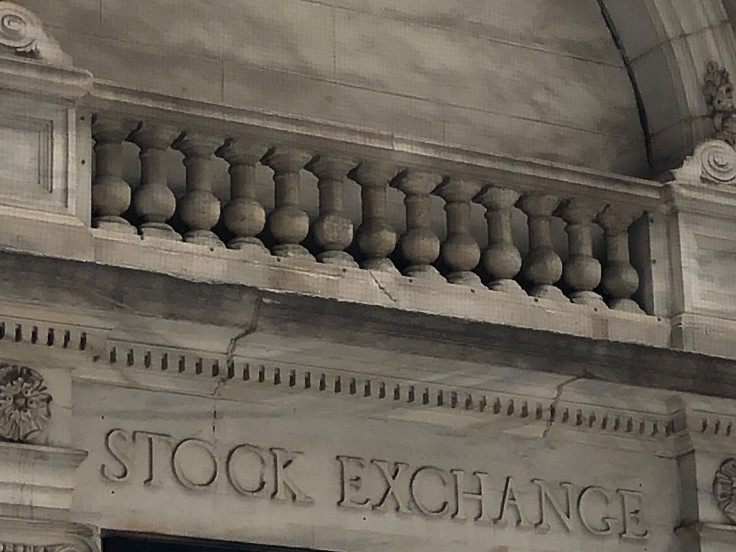Thursday's Stock Market Close: US Equities Rise Despite Onslaught Of Grim Economic Data

KEY POINTS
- 5.245 million Americans filed first-time claims for unemployment insurance last week
- 22 million have lost their jobs the coronavirus crisis – wiping out ten years of job growth since the Great Recession
- U.S. housing starts plunged by 22.3% in March
U.S. stocks finished higher on choppy trading on Thursday although more than 5 million Americans filed for initial jobless claims and the housing market collapsed in March.
The Dow Jones Industrial Average rose 33.33 points to 23,537.68, while the S&P 500 gained 16.19 points to 2,799.55 and the Nasdaq Composite Index rose 139.19 points to 8,532.36.
Nasdaq was led higher by Netflix (NFLX) and Amazon (AMZN) -- which climbed 2.91% and 4.36%, respectively, to record levels.
Volume on the New York Stock Exchange totaled 4.33 billion shares with 1,116 issues advancing, 19 setting new highs, and 1,855 declining, with 32 setting new lows.
Active movers were led by General Electric (GE), Advanced Micro Devices Inc. (AMD) and Nokia Corp. (NOK).
The Labor Department reported Thursday that 5.245 million Americans filed first-time claims for unemployment insurance last week, bringing the total number to 22 million during the coronavirus crisis – thereby wiping out ten years of job creation growth since the Great Recession.
“With 22 million people now unemployed the question at hand is how much higher can this number go,” said Mike Loewengart, vice president of investment strategy at E-Trade. “Today’s jobless claims still firmly indicate the fragility of the labor market.”
But Diane Swonk, chief economist at Grant Thornton noted the rate of weekly claims fell last week.
“It’s not exactly good news when the pain is compounding but it should be peaking,” Swonk said. “We are going to be disbursing 1.3 million-plus small business loans. They have to start using that money within 10 days, which means we’ll [have] people brought back on the payrolls in May and June.”
U.S. housing starts plunged by 22.3% in March to 1.216 million – the worst monthly decline since March 1984.
The Philadelphia Fed manufacturing index dropped in April to minus-56.6 after recording a minus-12.5 reading in March. The April figure was the lowest reading since July 1980.
New York Gov. Andrew Cuomo said the state will extend the shutdown of nonessential businesses until May 15, although the hospitalization rate in New York has fallen.
Marko Kolanovic, the global head of quantitative and derivatives strategy at JPMorgan, noted that deaths from the coronavirus pandemic may be peaking in the U.S., suggesting the economy may reopen sooner than previously thought.
“We think within a week from now, you will start seeing some limited moves,” he said. “It’s going to be limited: I’m talking baby steps. But that tells us that by the summertime, we may more substantially recover. And sometime next year -- maybe the second half of next year -- the economy reaches the high watermark. Which means that the market could reach a high watermark in the first half of next year.”
Morgan Stanley (MS) posted first-quarter profit of $1.01 a share (versus analysts’ expectations of $1.14 per share) on revenues of $9.49 billion. Shares edged lower by 0.13%.
“This week we seem to have narrowed the focus back to… what works in this work-from-home world,” said Art Hogan, chief market strategist at National Securities. “I think that’s the realization that we’re going to get a horrendous pile of data dumped on our heads. It’s easy to say the market’s a forward-looking mechanism and that it’s priced in, but then you start hearing banks talk about their loan-loss reserves and ... you get the real data. That’s what’s caused the pivot.”
Overnight in Asia, markets finished mixed. China’s Shanghai Composite edged up 0.31%, Hong Kong’s Hang Seng dropped 0.58% and Japan’s Nikkei-225 fell 1.33%.
In Europe markets finished narrowly mixed, as Britain’s FTSE-100 gained 0.55%, France’s CAC-40 slipped 0.08% and Germany’s DAX rose 0.21%.
Crude oil futures slipped 0.81% at $19.71 per barrel, Brent crude rose 1.55% at $28.25. Gold futures fell 0.24%.
The euro fell 0.62% at $1.0844 while the pound sterling dropped 0.55% at $1.2452.
The yield on the 10-year Treasury dropped 4.55% to 0.609% while yield on the 30-year Treasury fell 5.1% to 1.21%.
© Copyright IBTimes 2024. All rights reserved.



















